【1】An Arc Lamp Lights up the Dark Night
|
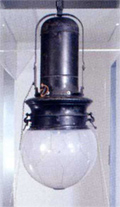 |
| From the Meiji to the Taisho Era, an arc lamp was widely used at meeting houses, squares, parks, and factories. The brightness of this light was said to be around 2000 candlepower. Since the brightness of a candle is .5 candlepower, you can imagine the brightness this arc lamp was able to generate. |
【2】Edison’s Light Bulb - Success through Trial and Error
|
| Through his lifetime, Thomas Edison obtained more than 1000 patents. One of his inventions was the electric light bulb. In order to create a longer-lasting bulb, Edison had searched for an appropriate material for bulb filament, which is the part of a bulb glowing and giving light. He finally found out that the bamboo in Yawata-mura, Kyoto was suitable for this purpose. It is surprising to know that Japan made a great contribution to the practical use of the electric light bulb. |
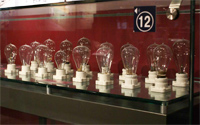 |
【3】 The Manhole - Making Sense When One Comes to Think of It
|
| Manhoru is manhole in English because it is a hole that a man crawls into to access the underground. Do you know that? Although people often refer to a manhole as a manhole cover on the ground, a manhole actually means the entire area beneath the cover that we never see. The manhole cover we see now is normally a circular shape but there were square-shaped ones in the past. A diagonal line of a square was always longer than one side so that a square cover would fall into the hole when placed wrongly. This is one of reasons why round shape becomes mainstream. There is no risk of it falling into the hole ? not matter how it is placed. |
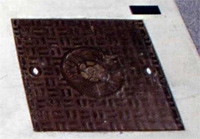 |
【4】 Charming Banzai Iron Tower
|
The Banzai Iron Tower was aptly named after the banzai gesture because it looks like a person throwing up one’s arms in the air. This shape was created by the design technology of the United States in order to minimize the land cost for the iron tower. If you notice, the Banzai Iron Tower occupies less area than the iron tower next to it. These iron towers on display have their legs cut off since they were too tall to be accommodated in the museum. Do you know which tower was taller originally? Even with their reduced size, you will still be overwhelmed by their enormity when you descend the stairs and look at them from the ground up.
(Link) Floor guide:The transmissin tower "Banzai Tower"used in the kinugawa power |
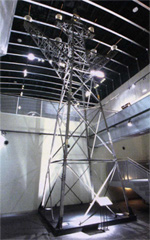 |
【5】The Francis Turbine - Generating Electricity through Water Power
|
The turbine for an electric generator is either a vertical water turbine or a horizontal water turbine. This turbine on exhibit was actually used at an electric power plant and its power generating output was the best in the East when it was built. If you carefully study the parts that were in contact with the water, you will notice wear and tear caused by small stones hitting it when it was turning. Can you find these marks?
(Link) floor guide:The vertical Francis water turbine and generator at the Shinanogawa Power Station |
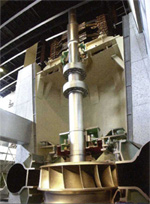 |
【6】An Electric Car - An Eco-friendly Car that Existed 100 Years Ago
|
In these days, an electric car attracts a lot of attention because of its environment-friendly features such as zero exhaust fumes, low noise and its contribution to CO2 reduction. It may surprise many of you that an electric car existed more than 100 years ago. This electric car was built in 1907 and works using a rechargeable battery. Do you know where its steering wheel is? It is the bar in front of the left seat. Its shape is quite different than today’s round steering wheel.
(Link) floor guide:An Electric Car |
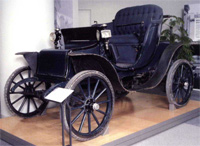 |
【7】Hidden Treasures
|
| There are quite a few historical materials in the Electric Power Historical Museum. Because of the large volume of items, we often overlook some if we don’t look at them carefully. Please look around the electric car closely. Do you notice that there is a foreign-made washer and a cleaner? In the Electric Power Historical Museum, there are many items that are often overlooked. Try looking for other hidden treasures in the exhibit. |
【8】Three Holy Durables - Yearning for Home Electronics
|
|
If you were to ask a person today what are the some of three holy durables of home electrics (the three most sought-after home appliances), these might include the flat-screen TV and the induction cooker. However, in the late 50s, three holy durables were a TV, a washer and a refrigerator. Some of you might recall actually using them at that time. We collect and display these old home electric appliances which bring back our old memories. How about remembering old days and reexamining the present through old home appliances? If you look inside the antique clothes washer with wringer, you will find an old-fashioned washing board. We can’t imagine how difficult it would be to hand-wash laundry piece by piece using the washing board.
|
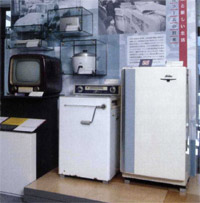 |
【9】The Largest Exhibit - Turbine Generator at the Chiba Thermal Power Station
|
The largest exhibit on display in the Electric Power Historical Museum is a turbine generator used at the Chiba Thermal Power Station. The entire length of this generator is 23 meters. This turbine generator was the most-advanced in the world and was also the largest in Japan when its operation was started in 1957. If you step closer, you will be amazed by its sheer size.
(Link) floor guide:The No.1 Turbine Generator used at the Chiba Thermal Power Station |
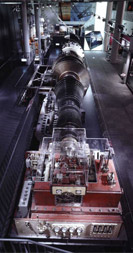 |
【10】Always Lighting the Future - Decorative Lamp at the Imperial Palace’s Ishibashi Bridge near Seimon-testu-bashi Bridge
|
|
Since it was first lit in 1893, the lamp at the entrance has illuminated the Imperial Palace Nijubashi Bridge for over 90 years. This lamp has been a witness to the tumultuous Showa period and will light the possibility of electricity and society filled with smile in the future. You can take commemorative pictures in front of the lamp. In addition, we also provide a commemorative seal.
(Link) floor guide:An ornamental lamp from the stone bridge at the front gate of the lmperial Palace |
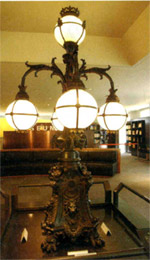 |
| ※We offer guided tour only in Japanese. |

